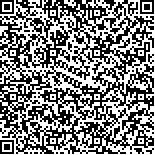下载中心
优秀审稿专家
优秀论文
相关链接
摘要

高分辨率遥感影像建筑物信息自动提取是遥感应用研究中的一个热点问题,但由于受到成像条件不同、背景地物复杂、建筑物类型多样等多个因素的影响使得建筑物的自动提取仍然十分困难。为此,在综合考虑影像光谱、几何与上下文特征的基础上,提出了一种基于面向对象与形态学相结合的高分辨率遥感影像建筑物信息分级提取方法。该方法首先利用影像的多尺度及多方向Gabor小波变换结果提取建筑物特征点;然后采用面向对象的思想构建空间投票矩阵来度量每一个像素点属于建筑物区域的概率,从而提取出建筑物区域边界;最后在提取的建筑物区域内应用形态学建筑物指数实现建筑物信息的自动提取。实验结果表明,本文方法能够高效、高精度地完成复杂场景下的建筑物信息提取,且提取结果的正确性和完整性都优于效果较好的PanTex算法。
The precise location and identification of buildings are of importance to many geospatial applications. High-resolution satellite images with multispectral channels contain abundant spectral and structural information about ground objects, making these images more suitable for automatic building detection. However, the automatic detection of buildings is still very difficult owing to many obstacles, such as different imaging conditions, complex background, and various types of buildings. Therefore, this paper proposes a novel hierarchical building extraction method based on object-oriented and morphological models for automatic building detection from high-resolution satellite images captured in complex scenes.
The proposed method first extracts build-up areas from high-resolution satellite images and then detects buildings from the extracted build-up areas. In the procedure of build-up areas extraction, the multi-scale and multi-directional Gabor wavelet transform is first applied to high-resolution satellite images. Then, a scale-invariant feature point detection algorithm that considers the multi-scale and multi-directional texture properties of build-up areas is proposed for the detection of building feature points. Subsequently, watershed segmentation algorithm with threshold mark is utilized to obtain homogeneous regions, and a spatial voting matrix is computed based on these homogeneous regions and the detected feature points to obtain confidence map. Finally, build-up areas are extracted by segmenting the confidence map using adaptive thresholding algorithm. In the procedure of building extraction, the morphological building index (MBI) is first applied to the extracted build-up areas, and then the initial building results are obtained by performing threshold segmentation on the MBI feature image. Finally, shape attributes such as length-width ratio are used to further refine the initial building extraction results.
The performance of the proposed method is evaluated using three high-resolution satellite images captured in complex environments. Evaluation results show that the proposed method can efficiently and accurately detect buildings in complex scenes with an overall accuracy and Kappa coefficient greater than 90% and 0.8, respectively. The proposed method also improves the omission and commission errors by 10.03% and 6.86% on average, respectively, as compared with the performance of the PanTex algorithm.
A novel hierarchical building extraction method based on object-oriented and morphological models is proposed in this study. The experimental results highlight the advantages of the hierarchical extraction strategy and demonstrate that the proposed method outperforms the PanTex algorithm. However, good performance of the proposed method relies heavily on the detection of built-up areas, and further improvements should be performed in the future.

